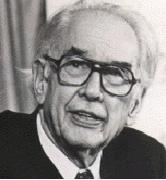| Key Words |
MIMO model; linear parameterization; parameter matrix
form; parameter vector form; stepwise regression. |
| Abstract |
There are two possible general forms of multiple input
multiple output (MIMO) regression models, which are either linear
with respect to their parameters or non-linear, but in order to
estimate their parameters, at a certain stage it could be assumed
that they are linear. This is in fact the basic assumption behind the
linear approach for parameters estimation. There are two possible
representations of a MIMO model, which at a certain level could
be fictitiously presented as linear functions of its parameters. One
representation is when the parameters are collected in a matrix
and hence, the regressors are in a vector. The other possible case
is the parameters to be in a vector, but the regressors at a given
instant to be placed in a matrix. Both types of representations are
considered in the paper. Their advantages and disadvantages are
summarized and their applicability within the whole experimental
modelling process is also discussed. |
| Article PDF | Download article (PDF) |



